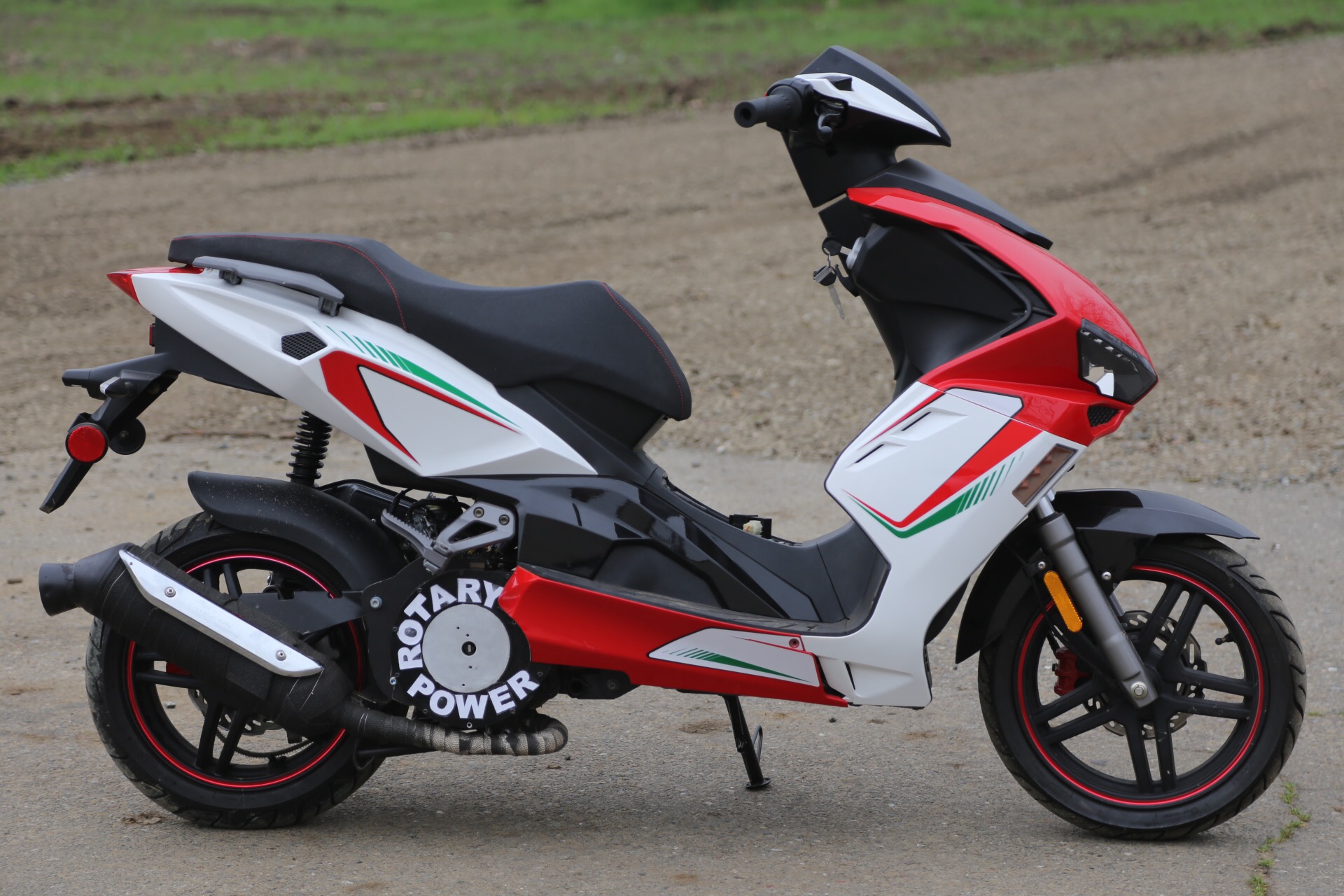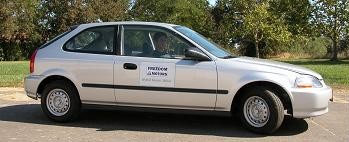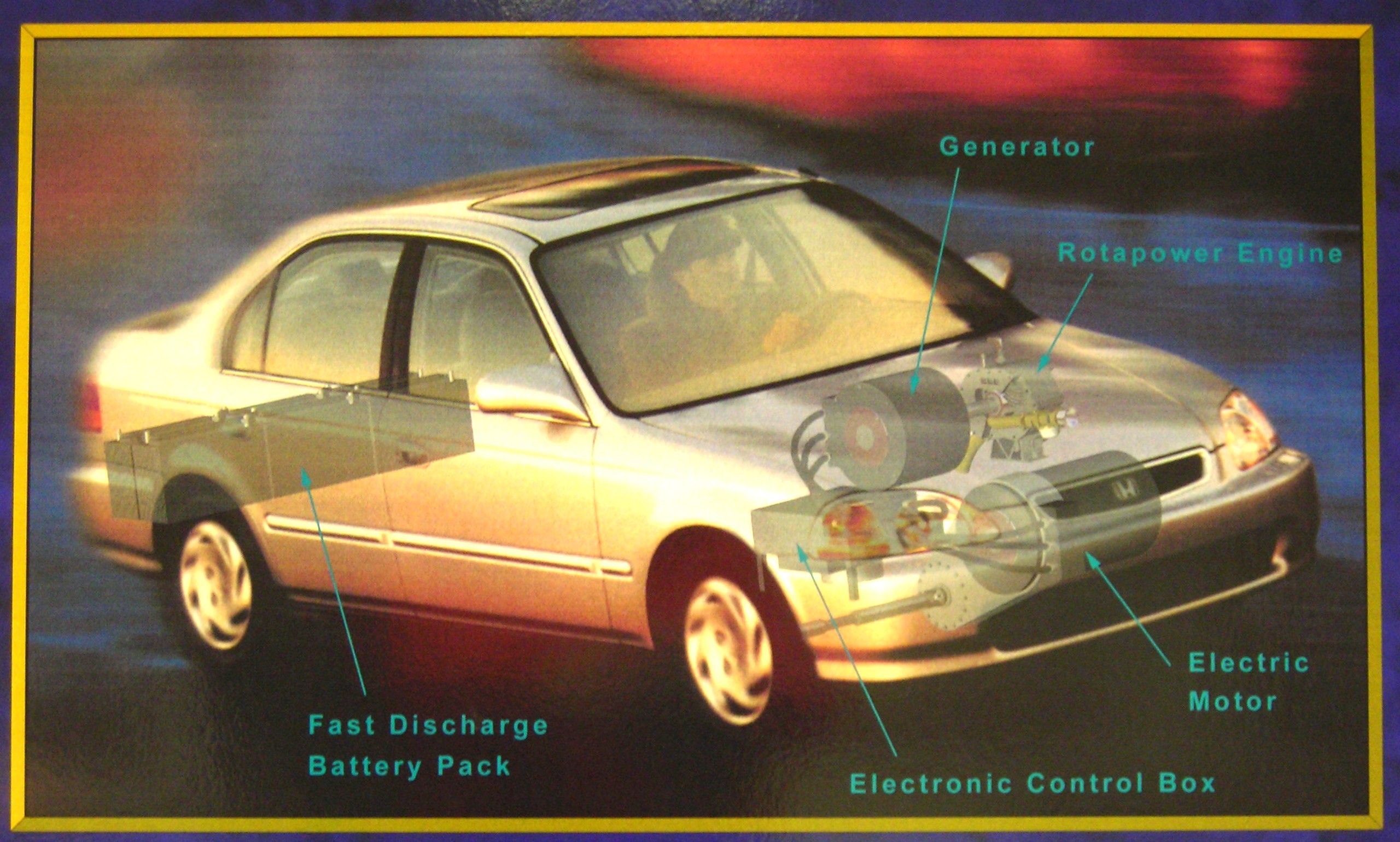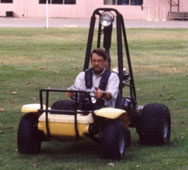Rotapower® Scooter Prototype
The Rotapower® engine is well suited to replace single-cylinder engines in small scooters, becuase of the engine's large amount of power in a small footprint. Ease of maintenance, long-lasting durability, and almost complete lack of vibration make the Rotapower® engine an ideal choice for enhancing the quality of any scooter product.
Freedom Motors took a development contract to integrate a 150cc Rotapower® engine into an ALIFE Air Automobiles scooter, replacing it's onboard single cylinder motor. The result is a scooter with a very smooth ride and lots of power with a significantly smaller engine. Below are the differences between the original scooter and the converted scooter, along with videos comparing the two.
| ALIFE Air Automobiles Scooter | ||
| Rotapower® Engine (150cc) | Original Engine (1 cylinder) | |
| Engine Weight | 20 lbs | 70 lbs |
| Engine Volume | 0.35 cu ft | 1.0 cu ft |
| Engine Start | Operate immediately due to pre-heating fuel/air by rotor | Requires one minute warm up |
| Horsepower | 17 HP | 7 HP |
| Acceleration 0-50 km/h | 4 seconds | 7 seconds |
| Radial Vibration | Essentially zero | Unpleasant |
| Torsional Vibration | Equivalent to 3 cylinder piston engine | Single cylinder engine with typical high peak to mean torque |
| Emissions | No valves so it can run very lean, which does not hurt performance because of extra power. A lean mixture helps eliminate hydro-carbons and carbon monoxide emissions. | Needs to run rich to save valves (true to all piston engines), which increases emissions. |
ALIFE Air Automobile Scooter with 150cc Rotapower® Engine
ALIFE Air Automobile Scooter with 150cc Rotapower® Engine
Visual Vibration Demonstration
(no audio)
Rotapower® Hybrid Prototype
The US has an urgent need to eliminate its dependence on Middle East oil. Since this region supplies only a small portion of the total oil consumed by the US auto industry, an increase of 3.25 miles per gallon would achieve this independence.
The modest mileage increase offered by present hybrid automobiles would require that they be sold in very large numbers to significantly reduce this oil dependence. However, recent battery developments make the plug-in hybrid electric car (PHEV) possible which could triple the effective miles per gallon achieved by hybrids like the Toyota Prius or Honda Insight. GM has a PHEV they named Volt where the engine is used only as back up for trips longer than 40 miles. This approach is attractive since charging the PHEV from the electrical power grid is equivalent to paying less than one dollar per gallon of gasoline. Replacing the majority of one year’s US automobile production by PHEV’s would eliminate the need for Middle East oil. The most significant design problem to creating a practical PHEV is finding the internal space to accommodate the large battery required for a 40-mile range together with the back-up engine/generator. In the GM Volt the proposed back-up piston powerplant is just as large as that in the Toyota Prius with its battery powered range of only 3 miles.
Versions of the Rotapower® rotary engine, developed and demonstrated under government contract, together with a state-of-the-art generator can reduce the usual space required for a piston engine power supply by over 80%.
Freedom Motors proposes to use its proven technology to create a 25-kilowatt self-contained power module called Rotapac®. This small backup module will include all cooling, muffling and controls and would provide the PHEV with a number of advantages:
- Module size is comparable to that of a small suitcase
- Additional modules can be added for larger vehicles or for use in mountainous terrain or when towing a load
- Can be serviced or replaced in minutes
Running the engine when plugged in at home provides sufficient electrical power to meet the emergency needs of a large house including heating and air conditioning.
The Rotapac® power module makes possible a 25-kilowatt electrical power supply that is two man portable. Such a unit is not available in today’s market and would be useful for a large number of mobile applications in addition to the plug in hybrid automobile.
| 1996 Honda Civic CX | |
| Curb Weight | 2,222 lbs |
| Wheelbase | 103.2” |
| Overall Length | 164.5” |
Rotapower® ATV Prototype
Recreational vehicles such as this ATV represent a large market where the Rotapower® engine would be better suited than two- or four-stroke engines. The engine's power-to-weight ratio becomes more critical when engine mass makes up a large percentage of vehicle mass. The Rotapower's® smaller size also allows greater vehicle design flexibilty. The Rotapower's® emissions advantage is very attractive with increasingly strict government regulations which will soon affect motorcycles and small recreational vehicles as well as power equipment such as chainsaws. Click here for a graph comparing Rotapower® emissions to engines of comparable performance. Freedom Motor's engines simply out perform the competition on all counts. Incorporating Rotapower® performance and dimensions into your designs now will save redesign, production change, and product support costs in the future.
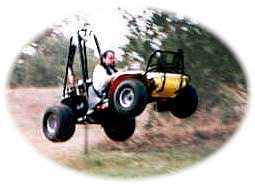 |
| ||||||||||||

